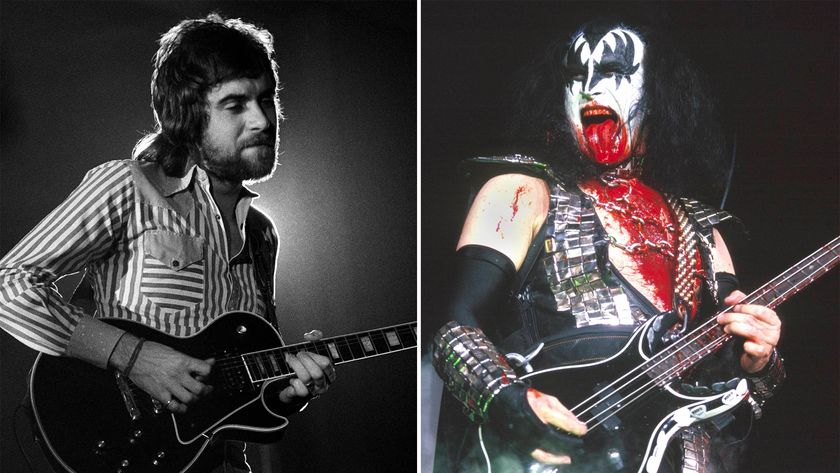Tosin Abasi Lesson: Seven-String Arpeggios
Tosin Abasi demonstrates some cool ways to perform a variety of arpeggios on the seven-string guitar.
To me, one of the most valuable study practices has been the exploration of arpeggios (also known as “broken chords,” wherein each note of a chord is played individually and in succession) played across all the strings. Like most guitarists, I began on six-string and soon graduated to seven- and then eight-string guitar. This month, I’d like to demonstrate some cool ways to perform a variety of arpeggios on the seven-string guitar.
An approach that has worked well for me is to devise a specific arpeggio fingering pattern diagonally across the strings, spanning over two octaves, for which I can then alter one or two notes in each octave to morph from one chord quality to another, for example, from minor seven to dominant seven or major seven. This way, the fingerings are visually and physically similar and thus easier to memorize.
Let’s begin with an Em7 chord (see FIGURE 1). After I strum the chord, I pick the notes of an Em7 arpeggio: E (the root), G (the minor, or “flatted,” third), B (the fifth) and D (the minor, or “flatted,” seventh), descending across the top five strings in seventh position and then continuing across the bottom three strings in fifth position.
In order to get the most out of my practice time, I’ll incorporate economy picking (also known as rest-stroke picking) into the execu- tion of arpeggios such as this. Economy picking is a technique whereby you use the same pick direction when crossing to an adjacent (neigh- boring) string: when moving from a lower to a higher string, the last note on the lower string and the first note on the higher string are picked with downstrokes. Conversely, when moving from a higher to a lower string, the last note on the higher string and the first note on the lower string are picked with upstrokes.
FIGURE 2 illustrates an Em7 arpeggio ascending and descending across all seven strings, with fret-hand fingerings and pick strokes indicated. I begin with an upstroke on the low B string, followed by three consecutive downstrokes as I move across the bottom three strings. This pick-hand movement is then repeated for the next four notes (played on the middle three strings), followed by a hammer-on from the G string’s seventh to ninth frets and the continuation of the downstroke movement across the top three strings. I’m essentially raking across the top five strings. When I descend, I use consecutive upstrokes, or a reverse rake, to move across to lower strings.
Now let’s tweak this pattern to formulate other arpeggios qualities. FIGURE 3 offers an Emaj7 arpeggio (E G# B D#) picked the same way as FIGURE 2, and FIGURE 4 formulates an enigmatic-sounding Emaj7#5 arpeggio, achieved by changing the B note of Emaj7 to C (the augmented, or "sharped," fifth). Interestingly, Emaj7#5 can also be analyzed as a G# major triad (G# B# D#) played over an E bass note (G#/E). FIGURES 6, 7 and 8 illustrate similarly structured arpeggio patterns for E7 (E G# B D), Em/maj7 (E G B D#) and Em7f5 (E G Bb D) of Emaj7 to C (the augmented, or “sharped,”D), respectively.


Get The Pick Newsletter
All the latest guitar news, interviews, lessons, reviews, deals and more, direct to your inbox!

Want to play Master of Puppets the right way? Here's how to get faster at downpicking so you can chug like James Hetfield
![Joe Bonamassa [left] wears a deep blue suit and polka-dotted shirt and plays his green refin Strat; the late Irish blues legend Rory Gallagher [right] screams and inflicts some punishment on his heavily worn number one Stratocaster.](https://cdn.mos.cms.futurecdn.net/cw28h7UBcTVfTLs7p7eiLe-840-80.jpg)
“The intensity of Rory’s guitar playing – the emotion, the sound and his incredible attack – was mindblowing for me”: Joe Bonamassa pays tribute to the late, great Irish blues-rock icon Rory Gallagher









